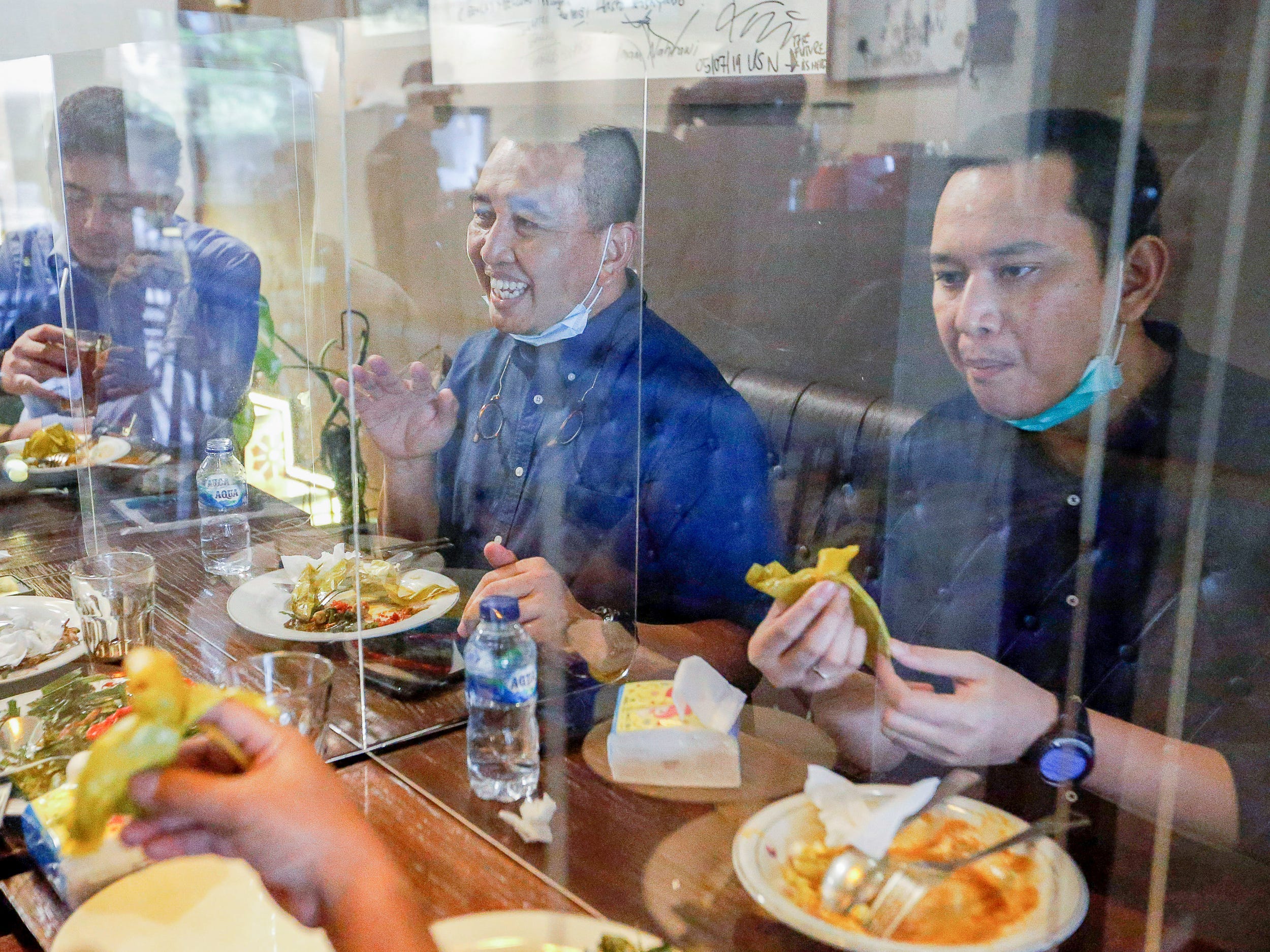
REUTERS/Ajeng Dinar Ulfiana
- 13 scenarios show how mask-wearing and other factors may alter the safety of indoor spaces.
- These were designed using an MIT calculator, which is available online.
- It claims to offer a smarter way to manage risk than catch-all rules like 6ft social distancing.
- See more stories on Insider's business page.
A calculator designed by MIT researchers shows how factors such as people's behavior, their mask wearing, the size of a space, and the level of ventilation, can change the safety of indoor spaces.
The online tool accompanies a recent study where MIT researchers argued that staying 6ft away is a relatively ineffective way to reduce the risk of exposure to the virus.
They offered a more sophisticated version instead, taking into account many different factors and newer understanding of how coronavirus particles behave in closed spaces.
Insider used the calculator for 13 scenarios described below.
They describe situations and estimates how long it would take for an infected person entering that space to infect one other person. They all assume the B1.1.7 variant, which was first found in the UK and later became dominant in the US.
An important caveat: the scenarios are only models. They can't take into account every risk, and the researchers could have made wrong assumptions, as could Insider.
But it gives a good impression of our best understanding of how this works:
Restaurant, 6 ft distancing, speaking, no mask: 47 minutes
We assume a 1,000 sq. ft. restaurant with 27 people inside (the maximum while sticking to the 6ft rule).
Restaurant, 6 ft distancing, speaking, no mask, better ventilation: 3 hours
This scenario assumed air filtration as good as on a plane, and very frequent changes to the air in the room.
Office, 6 ft distancing, speaking, mask: 6 hours
We assumed a 10,000 sq. ft. office space that can fit 277 people (the maximum if spread 6 ft apart).
Office, less distancing, speaking, masks: 3 hours
This scenario assumed double the number of people in the same space.
Office, 6 ft distancing, speaking, masks not worn properly: 2 hours
This assumed that masks are not well fitted or not properly covering the nose, mouth, and chin.
Office, 6 ft distancing, speaking, no masks: 43 minutes
The calculator said that face shields are as ineffective as wearing no mask at all.
Gym, distancing, moderate exercise, no mask, normal ventilation: 18 minutes
We assume a 6,000 sq. ft. gym, with average ventilation.
Gym, distancing, moderate exercising, masks: 2 hours
Masks make a significant difference when exercising, per the calculator.
Gym, distancing, masks, moderate exercise, better ventilation: 10 hours
This setting assume air filtration similar to that on a plane, with frequent air changes in the room.
Church, speaking, no mask: 3 hours
In this scenario, we assumed the size of a small choir, 10 people, in a 1900 sq. ft. building with 30 ft high ceilings.
Church, singing, no masks: 4 minutes
Swapping speaking for singing was the most drastic single change we saw, cutting the time by more than 95%.
Plane, full, masks: 2 days
In this scenario, the plane is carrying 200 passengers. Planes have good air filtration.
Plane, full, no masks: 6 hours
Removing masks on a plane was also drastic, cutting the time by almost 90%.